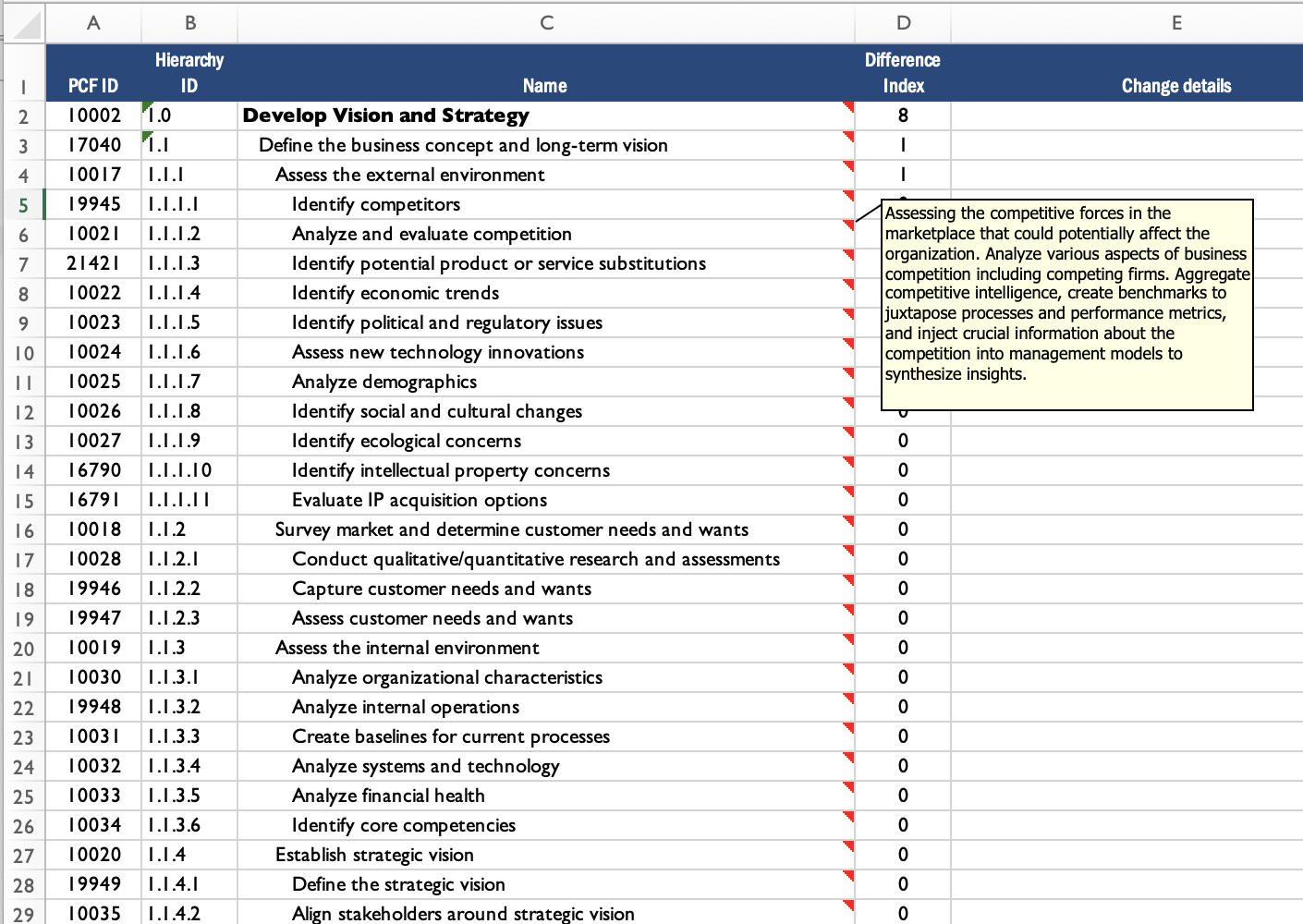What are the World's Top 13 Core Business Processes?
In this article we sum up the 13 major business categories according to the APQC Process Classification Framework (PCF) list of core processes.
It turns out that this content is THE top 13 core business processes that make companies tick around the world. It’s the bread-and-butter of how to structure an enterprise. In this article, I’ll introduce PCF, present the list of the big 13, share a talk from a consulting company using and helping clients with these processes, and explain how I partnered with APQC to make it available for free as executable recipes in Pie.
What’s APQC PCF?
APQC is the American Productivity and Quality Center. They are a non-profit organization. Their APQC About page says, “we provide independent, unbiased, and validated research and data to our more than 1,000 organizational members in 45 industries worldwide.”
APQC’s PCF stands for “Process Classification Framework.”
ENKI, LLC CEO Lawrence Dillon has a good summary of PCF. He says, “Basically, it’s a list of industry standards or best practices. It lists many of the things that should be happening in an organization. For us, it’s a baseline.”
What are the APQC PCF 13 Business Processes?
Here’s a list of the top 13 key categories. They list pretty much what all medium to large businesses do day to day.
Develop Vision and Strategy
Develop and Manage Products and Services
Market and Sell Products and Services
Deliver Physical Products
Deliver Services
Manage Customer Service
Develop and Manage Human Capital
Manage Information Technology (IT)
Manage Financial Resources
Acquire, Construct, and Manage Assets
Manage Enterprise Risk, Compliance, Remediation, and Resiliency
Manage External Relationships
Develop and Manage Business Capabilities
APQC has all the content in a large Excel spreadsheet with multiple worksheet tabs. The following image is an example from the Develop Vision and Strategy worksheet. In this image, I hovered my mouse over the notes in row six to show you its detail. Every line item in each category has detailed descriptions like this example. As you can see, it’s pretty robust —
Where to get the PCF content?
I will provide two ways to get this content.
Option 1 — From the APQC Website (free)
You can download the Excel sheet containing the thirteen core processes, separated worksheets, from the APQC website.
Click here to go to the PCF page. Then click the View Now button and fill out the short form to obtain the downloadable file.
Option 2 — From the Pie Recipe Store (free)
You can import the same content as ready-to-execute in the Pie project management application for free and use it in a free membership plan in Pie.
Click here to go to the Pie Recipe store. Then scroll to the Strategy & Leadership section and select which category you want. It will take you to its landing page for more information. Then click the orange Import button and follow the simple steps.
How to Implement APQC PCF?
Consulting firm ENKI, LLC Shares ITS Experience with PCF and how to Use It
Lawrence Dillon, CEO of ENKI, LLC, (along with myself) presented an APQC-sponsored webinar event in 2022. Lawrence shared his company’s experience with the APQC PCF models and how they help their clients obtain a baseline against the PCF and then how to improve their processes.
You can watch this webinar on APQC’s YouTube channel below and learn not only how to implement PCF but also about the challenges businesses around the world face with their business and project processes, why they fail, and what you can do about it with the help of the APQC PCF model. Lawrence’s firm is a customer of Pie and spends most of the time showing how he implements PCF with Pie for more accountability and tracking. However, you can also use the list in the Excel sheet for your company.
Click on the following video to watch the webinar —
APQC PCF Made Easier to Implement With Pie
At Pie, we partnered up with APQC to make the content of the PCF available to anyone for free inside Pie. You can fully execute the PCF processes as projects in Pie with the Pie free membership plan.
Why did we do this?
Having a list of things to do in a spreadsheet is a good start. But, we felt it would be more productive to include it in Pie for our members and anyone else in the world to use more efficiently. Here are some critical benefits of reviewing and implementing APQC’s PCF framework as projects:
Implement the PCF model with a more visual and friendly approach
Run PCF as a project to compare with your current daily business processes and to identify process improvement opportunities
Modify the PCF for your own company’s needs
Assign dates as execution targets for each PCF line item
Assign your people to the PCF tasks for action and accountability
Mark the PCF task as done as they are checked off
Post issues or risks for problem areas and discuss solutions
See who has done what and review progress in your dashboard
Repeat the PCF process at your company for ongoing baselining and continuous improvements
What the following short video on how APQC PCF looks in Pie —
Whether you use Pie or follow the content in a set of Excel worksheets, the PCF content is vital for any business wanting to audit its internal processes against these industry best practice standards.
Does your firm have these core categories defined as standard processes that are documented, implemented, and continuously assessed for improvement?
Written by: Paul Dandurand, PieMatrix Founder
Banner Photo by Joe Taylor


